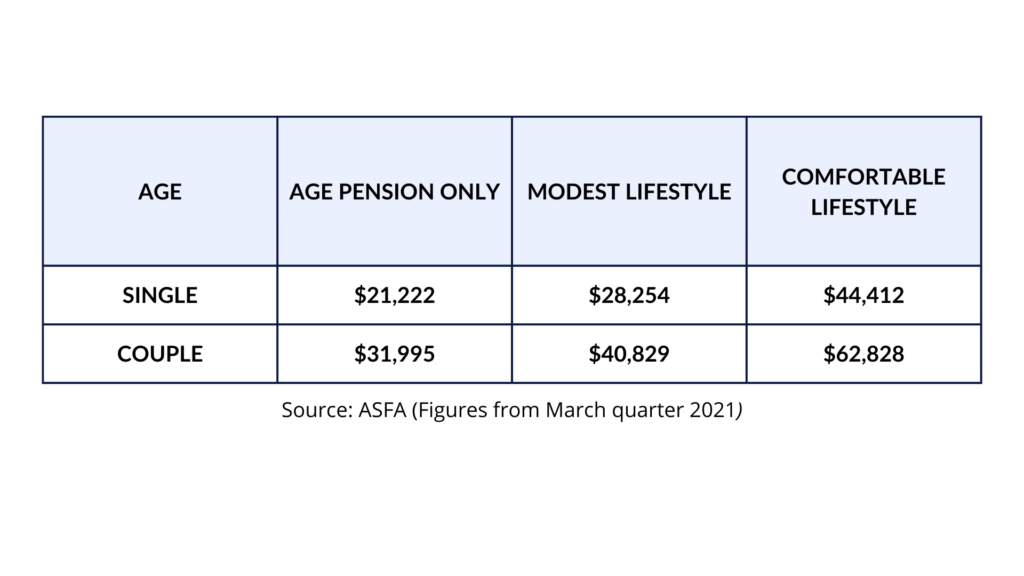What do you need to know about super in your 40s?

Your forties are often a busy and expensive time of life. You could be focused on paying off your mortgage, paying for your kid’s education, or maybe you’re investing in property or the share market.
Although you’re possibly only halfway through your career, it is an important time to take a step back and review your retirement goals and plan.
How much do you need to save for retirement?
According to the Australian Superannuation Funds of Australia (ASFA), the amount you need for retirement depends on what type of lifestyle you’re aiming for and whether you’re saving as a single or in a couple.

How are you tracking?
When was the last time you checked your super balance? If it has been a while, we encourage you to log in to your superannuation account to see how you are progressing, and to do this regularly.
You can refer to the below table as a guide to how you are tracking with your super. Please note that this is just an average for your age and gender but may be too high or low for your individual needs.

You can also use the handy Super Guru calculator to help you get an understanding of your progress!
Strategies to boost your super
If you are concerned about your superannuation balance or if you are simply keen to get ahead while time is on your side, I have three useful tips to share.
1.Keep your super in one place
You may still have multiple superannuation accounts from previous jobs. It is always a good idea to consolidate your super to avoid multiple account fees so that you can easily keep track of how you’re going. To search and consolidate your super, you can visit MyGov.
2. Salary Sacrifice
You always have the option to pay more than the mandatory 10.5% from your employer. A little extra every week can make a big difference over an extended period.
You can set up a salary sacrifice arrangement with your employer whereby part of your pre-tax income is paid straight to your super. Salary sacrifice may also reduce your taxable income, which means you will pay less tax each pay period.
3. Make personal contributions
Personal contributions are a great way to boost your superannuation and they come with tax benefits! Superannuation contributions are taxed at a lower rate compared to regular income, which can help you save on tax. Additionally, if you are earning below a certain income threshold, you may be eligible for a government co-contribution which can further boost your savings.
4. Consider spouse contributions
If you are a low-income earner, your spouse or de facto partner may be in a position to make after-tax contributions to your superannuation fund. Depending on both of your financial circumstances, they may also be able to claim a tax offset of up to 18 per cent when they lodge their tax return.
If your assessable income is $37,000 or less, and your partner makes an after-tax contribution of at least $3,000, you‘ll be able to access the maximum tax offset of $540. This offset amount reduces progressively with every dollar you earn over $37,000 up to $40,000.
Even without this tax offset, your retirement savings will still benefit from a boost from spouse contributions.
5. Review your insurance
We recommend that you review your insurance regularly throughout your working life. Depending on your circumstances, you could benefit from taking out insurance within your fund. You could also opt out of these insurance options if you have this covered elsewhere, meaning that more will be contributing towards growing your super.
Seek financial advice
Retirement planning and superannuation may be at the bottom of your priority list right now, but there has never been a better time to seek advice and get ahead. If you leave it too late, you could be chasing your tail in your later years.
When you have a clear vision and a plan in place, you’ll be able to make your money work for you now and in the future.
Learn more about APS Financial Planning.
Written by APS Financial Planner Timothy Foster
Timothy joined the APS Benefits Group in 2006 and launched the APS Financial Planning department. He is an experienced and respected financial planner who is committed to focusing on client needs and assisting them to maximise their financial assets. Timothy is well known for his simple and straightforward strategies designed to benefit his client’s future.
Timothy Foster’s qualifications include Certified Financial Planning (CFP), Life Risk Specialist (LRS) & Advanced Diploma of Financial Services (Financial Planning), with over 25 years of experience in Financial Planning, Banking and Accounting, both within Australia and overseas. He has extensive experience in Government Superannuation funds, putting him in demand to speak at seminars and departments.
Outside of being a passionate Financial Planner, Timothy is a proud dad of two young children and loves travelling, be it outback Australia or just around the corner!

